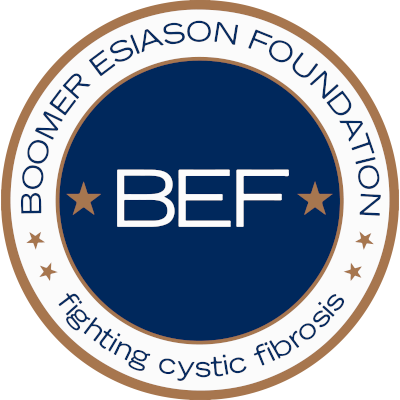Shared Decision Making & Care Guidelines
Written by: Mallory Holloway
As someone living with cystic fibrosis, I’ve spent countless hours of my life in and out of doctor’s offices. While my journey has been shaped by numerous healthcare professionals as well as my care team, I have learned that the most empowering experiences have come from moments where I was actively involved in my treatment decisions. This collaborative approach, known as shared decision-making, has allowed me to take ownership of my healthcare and has improved my physical health and overall well-being.
Shared decision-making is a model where healthcare providers and patients come together to make decisions regarding treatment plans. This involves considering medical evidence as well as the patient’s personal goals, values, and experiences. I believe that the shared decision-making process must be implemented in clinical settings to foster better communication, improve patient outcomes, and provide holistic care.
The concept is not just about understanding a patient’s medical history—it’s about considering their mental health and preferences while they are going through medical hardships. I was lucky enough, and still am today, to have a care team that has been with me my whole life and knows almost more about me than I do. Because of this, it’s easy for them to work with me and easy for me to communicate my goals with them.
The process gives patients a voice in their healthcare. It’s a holistic approach that shapes informed decisions drawn from medical evidence and values. Colorectal cancer is a high risk for CF patients due to the challenges caused by the CFTR protein. This information should be transparently shared between patients and doctors. They should be told why early screening is important, what symptoms to watch for, and how screenings can fit into their health plan. As patients living with a chronic condition, we are the ones who have to live with the outcomes of treatment decisions, so it only makes sense that we have a say in the process.
One of the most impactful moments of shared decision-making in my journey was choosing between continuing my existing CF medication regimen or switching to a newer treatment with promising results. Although my doctors knew that the new medication was working well with other patients, they still allowed me to decide if I thought it was for me. I was
able to have an open conversation with my care team about the benefits and downsides. We discussed how the newer treatment could reduce my daily pill count and eliminate breathing treatments but also addressed potential side effects and long-term unknowns. Ultimately, the decision was mine and my parents, and because I had been an active participant in the discussion, I felt a sense of power in my medical journey.
Shared decision-making not only improves communication but also enhances patient’s compliance and commitment to treatment. In a traditional healthcare model, doctors often provide patients with treatment options and the assumption that they know what’s best for them. However, it is a fact that no one knows their body better than the inhibitor. In situations where there isn’t a clear “best” option, this process allows for someone to weigh the pros and cons of different treatments based on what matters most to them.
For example, it is common for people living with CF to have elevated levels of cholesterol. Because of this, they may be presented with the option of adding a statin—which is a drug that reduces levels of fats in blood—to their medical regimen. Some patients may choose the statin, others may focus solely on lifestyle changes, while others may choose a mix of both. In this case, there can be benefits from all approaches and similar outcomes, so the choice must be up to the patient. This will help patients do a better job of sticking to their goals and following their treatment plans. Every patient has a different lifestyle and is working towards different goals and this needs to be acknowledged and prioritized by healthcare providers.
In addition to autonomy, shared decision-making strengthens the bond between patients and their doctors. Throughout my CF journey, I’ve built many strong relationships with my doctors because they’ve treated me as a partner in my care. My doctors understand almost every aspect of my journey and what matters to me most. This connection is crucial for someone with a chronic illness, where medical decisions are ongoing and often emotionally taxing. Feeling heard and valued by my care team has made a significant difference in how I view my healthcare.
Of course, shared decision-making isn’t without its challenges. Healthcare appointments are already short, and including additional time for detailed conversations can be daunting. While this can be tedious and annoying, I believe it will make a difference. It will ensure the patient leaves the appointment understanding their options and feeling confident in their choice.
Another challenge is that not every patient feels comfortable or confident making decisions about their healthcare. Healthcare providers need to recognize this and support their patients. Effective communication, compassion, and patience are the keys to guiding patients, especially those dealing with chronic or life-threatening conditions, like CF.
Language barriers and communication issues can also make this process difficult. I’ve been fortunate to have providers who explain things in ways I can understand, but I know that isn’t always the case for everyone. It’s critical for healthcare providers to be mindful of their communication style, ensuring that patients from all backgrounds feel empowered to engage in their healthcare.
This patient-centered approach to healthcare has transformed my life and made my trips to the doctor that much easier. Involving me in the decision-making process has allowed me to take ownership of my treatment, leading to better outcomes and a deeper sense of control over my condition. Shared decision-making should be embraced as a necessary shift toward patient-centered care. It serves as the ultimate key to recognizing providers’ expertise while also empowering patients to be active participants in their health.
